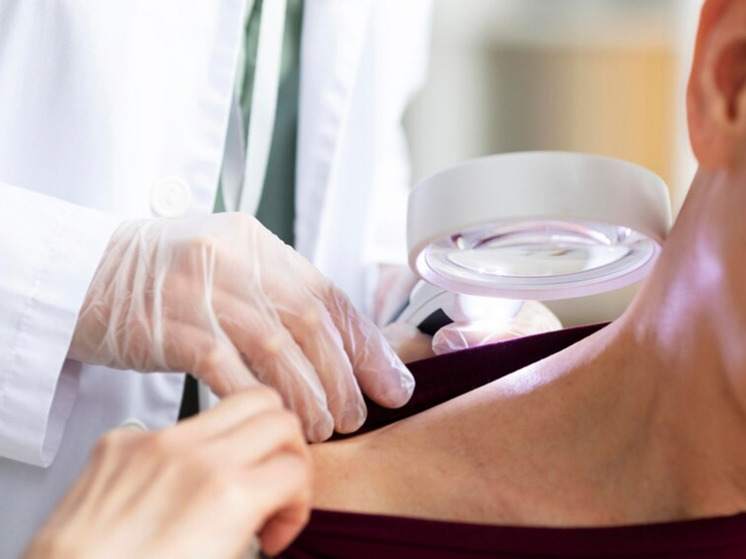The main role here is played by the microbiome, that is, the totality of microorganisms living on the skin
They say that all diseases come from nerves. However, in recent years, more and more evidence has emerged that the cause of the development of many diseases is the skin, or more precisely, a violation of its microbiome. Experts spoke about this during the III conference “Integrative dermatovenereology and cosmetology” that opened in Moscow. New standards of interaction.»

The skin is the largest human organ, its area occupies 1.5-2.3 square meters. m. And according to some data, even up to 25, if you count along with the inner surface, hair follicles and sweat glands. The main functions of the skin barrier are to prevent water loss and prevent various pathogens from entering the body. The skin protects us from excessive UV radiation, helps us breathe, and provides thermoregulation. And, of course, the skin has its own ecosystem — billions of beneficial bacteria live on it.
The first description of skin bacteria dates back to 1683, but only in 2000 the scientific term “skin microbiome” appeared.
< p>Leading Russian microbiologist, academician of the Russian Academy of Sciences, scientific director of the Research Institute of Vaccines and Serums named after. I.I. Mechnikova Vitaly Zverev says that the study of the microbiome today is a fashionable topic, but most often they talk about the community of microorganisms in the intestines. Meanwhile, the skin microbiome plays a huge role in the prevention and development of many diseases. “The number of bacteria in the intestines and on the skin is comparable,” emphasizes Academician Zverev.
He says that the skin microflora is divided into resident (that which lives with us constantly) and transistor (coming), from which various kinds of problems can arise. “Transient microflora of the skin is the one that comes and goes, but sometimes it colonizes areas of the body and areas of the skin.
These are staphylococci, streptococci, E. coli, fungi. When there are a lot of these microorganisms, this can cause the development of various dermatoses, atomic dermatitis, acne, rosacea, dandruff,” continues Vitaly Zverev.
For example, the causes of atopic dermatitis are most often staphylococci, and psoriasis is most often caused by actinobacteria. It is obvious that healthy skin is skin with a balanced microbiome, but if it is disturbed, problems are unlikely to be avoided. Any disruption to the microbiome can at a minimum cause dryness, irritation and inflammation, and also make it easier for viruses to enter the body. “Today, the role of viruses in the formation of skin cancer, including melanoma, is being actively studied. Therefore, the skin microbiome plays a huge role in the development of diseases,” notes Academician Zverev.
Various factors can disrupt the microbiome: temperature, wind, weather, aggressive cosmetic care (peelings, scrubs, antiseptics), hormonal changes, stress , nervous tension, anxiety.
As Alexey Samtsov, head of the department of skin and venereal diseases of the Military Medical Academy, says, in the microbiome of normal skin, more than 60% are beneficial bacteria and a little more than 20% are staphylococcus: “With atopic dermatitis, the skin is colonized by bacteria, fungi and viruses. The more acute the AD, the more significant the decrease in microbiome biodiversity. But the main role in its development is played by Staphylococcus aureus. Recently, the theory that an imbalance of the skin microbiome is the main cause of the development of atopic dermatitis has been actively discussed in scientific circles. Risk factors for the disease also include genetics, impaired skin barrier, loss of skin water, immune dysfunction, and environmental factors.
How to maintain a healthy microbiome?
Today, external products with beneficial bacteria (probiotics and prebiotics) are gaining popularity. Professor of the Department of Infectious Diseases, Epidemiology and Dermatovenerology, Faculty of Medicine, St. Petersburg State University, dermatovenerologist, St. Petersburg State Budgetary Institution «City Dermatovenerological Dispensary» Irina Smirnova says that in recent years new areas of bacteriotherapy for skin microbiome disorders have emerged. In addition to the use of antibiotics, the practice includes transplantation of living microorganisms from healthy people or from patients themselves. “Cosmetic products with bacteria (protibiotics) that live in the microbiome of the gastrointestinal tract, skin and genitals have performed well,” notes Irina Smirnova
Academician Zverev is confident that very soon they will appear in the hands of doctors. vaccines that stimulate the innate immune response: “This is a promising direction, I think such vaccines will prevent various skin diseases, including atopic dermatitis.”






















































Свежие комментарии